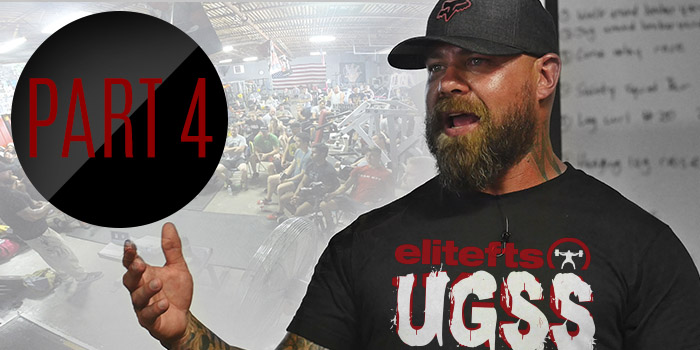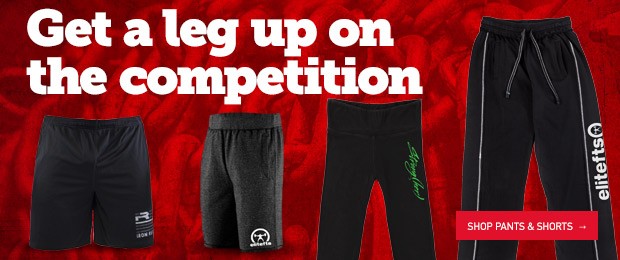
Now that we've reached part four of Jim Wendler's 2016 Open UGSS Presentation, here is a summary of the topics Wendler has covered so far:
- Part One — Earning the Barbell, Training Philosophy, and Industry Trends
- Part Two — Training Standards and Injury Management for Kids
- Part Three — Programming Layout for Athletes
For part four, the video in this article, Wendler goes into detail about exercise selection for both core and assistance lifts, and how to have young athletes attempt PRs. A list of his major points is included below.
Program Design:
- Mobility
- Jump
- Main Lift
- Assistance and Conditioning
Core Lifts:
- Squat
- Trap Bar Deadlift
- Bench Press
Assistance:
- DB Squat
- DB Straight Leg Deadlift
- DB Press
- DB Rows
- Chins
- Dips
- Push-Ups
- Ab Wheel
Attempting PRs:
- For squat: 2-3 sets of 5 at their top weight and then a PR set
- For bench: 4 sets of 5 at their top weight and then a PR set.
As usual, here are some of Wendler's best quotes from the video:
- "We live on sets of five. Once the kids are ready we do PR sets."
- "We had the JV/Freshman team attempt PR sets and the attitude of the weight room has completely changed now. They think they're the cock of the walk."
- "You want athletes to get stronger but not in a smokescreen fashion."
- "When you strength train for something other than strength training, it's GPP. "
- "For sports, lifting weights is nothing more than GPP, but it has to be specific enough to carryover to your goal."
- "It stands for washed-up, lethargic, retired, used-up sportsmen. That's what WALRUS stands for."
By the minute:
- Training parameters for "athlete lower, bodybuilder upper" (0:12)
- Definition of a PR set — more doesn't always mean you're stronger (2:30)
- Strength training is GPP (3:55)
- Core lifts and assistance lifts within the program (5:07)
- The WALRUS Challenge (6:40)
- Can you overhead press instead of a variation of the main movement? (10:01)









